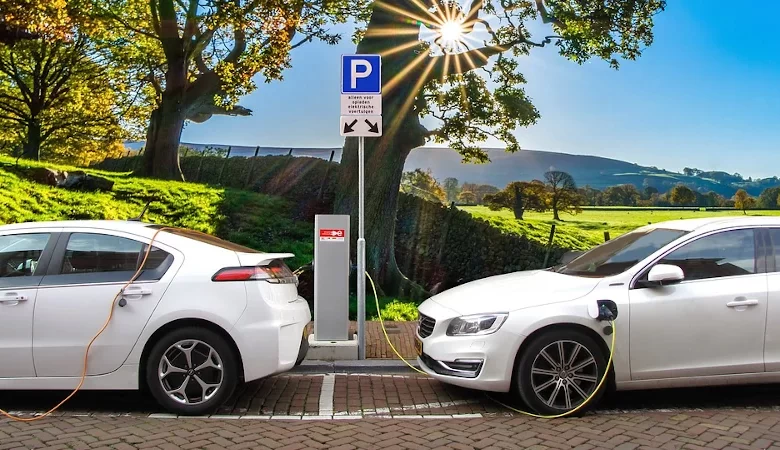The Era Of Slower Growth In Global Electric Vehicle Market Has Arrived – Analysis – Eurasia Review

By He Jun
On April 15, Tesla CEO Elon Musk issued a memo announcing plans to cut over 10% of its workforce globally. In the memo, he expressed gratitude to departing employees and stated that this move would help Tesla prepare for the next “growth phase cycle”.
According to Tesla’s financial report, as of the end of 2023, the company had a total global workforce of 140,473 people. Based on Musk’s announcement, this round of layoffs will affect over 14,000 jobs. Tesla’s last large-scale layoffs occurred in June 2022. Currently, it is experiencing a cyclical downturn. In the first quarter of 2024, Tesla’s sales fell by 20% to 386,800 vehicles compared to the previous quarter, below the expectations of the capital market. Its main markets globally are the United States, China, and Europe. From the fourth quarter of 2023 to the first quarter of 2024, the demand for electric vehicles (EVs) in these markets experienced periodic fluctuations due to various factors.
U.S. media reported that in the first quarter of 2024, the overall growth of the American new car market was 5%, with the sales of EVs increasing by only 2.7% year-on-year. In contrast, in the first quarter of 2023, the year-on-year growth rate of EV sales in the U.S. was as high as 47%. The proportion of EVs in new car sales in the U.S. also decreased, from 7.6% for the full year of 2023 to 7.1% in the first quarter of 2024. Data released by market research firm Rho Motion showed that in the first quarter of 2024, the overall growth rate of new energy vehicle sales in the U.S. and Canada was 13%. During the same period, the year-on-year growth rate of new energy vehicle sales in Europe was 7%. Rho Motion attributed this mainly to the sluggish German market, where sales of new energy vehicles declined by 21% year-on-year. The European Automobile Manufacturers Association (ACEA) has not yet released sales data for March. Statistics for February showed that the market share of pure EVs in Europe remained at 12%, with Belgium, France, and the Netherlands performing well, though Germany saw a year-on-year decrease in EV sales of 15.4% as the country terminated EV subsidies prematurely in December 2023.
What does it signify for Tesla, a leading global EV maker, to reduce its workforce by 10%? Researchers at ANBOUND believe that this layoff cannot be simply understood as a “normal adjustment” for a company, but rather as a precautionary measure by Tesla to cope with a new era. In fact, Musk has already provided a crucial answer — “the next growth phase cycle” for the global EV industry is on the horizon.
It should be pointed out that this very phrase of “the next growth phase cycle” is an industry euphemism, which in plain language means the high-growth period of EV has ended, and a period of slow growth is coming. For the global EV market that was previously flooded with capital, competition will become even more intense. It is almost certain that there will be continuous eliminations of EV players amidst the fierce competition. As researchers at ANBOUND have previously forecast, even well-established EV manufacturers in the current market cannot guarantee immunity from challenges in the coming intense competition.
The rapid development of Chinese EV manufacturing is one of the crucial factors driving changes in the global EV market. In the past two years, Chinese EV companies have experienced explosive growth. According to data from the Chinese Ministry of Industry and Information Technology, in 2023, China’s automobile production and sales exceeded 30 million vehicles for the first time, with annual production and sales reaching 30.161 million and 30.094 million vehicles respectively, representing a year-on-year increase of 11.6% and 12%, reaching a historic high. Data from the General Administration of Customs of China shows that in 2023, the country exported 5.221 million vehicles, an increase of 57.4% compared to the previous year. From the viewpoint of single-country automobile exports, China emerged as the top global automobile exporter in 2023, where it exported 1.773 million new energy vehicles in that year, an increase of 67.1% compared to the previous year.
The explosive growth of Chinese EV manufacturing in the global market was a major event last year, triggering a series of subsequent impacts. With Chinese manufacturers having essentially gained control over the entire industry chain resources and possessing comprehensive competitiveness, particularly in EV, this immediately caused traditional automotive giants in Europe and the U.S. to feel threatened, leading many of them to postpone their ambitious electrification transformation plans. Such competitive shock quickly converged with the geopolitical wave, evolving into various industrial competition actions and national intervention moves marked with significant geopolitical motives. For example, the European Union has begun an anti-subsidy investigation into EVs from China, attempting to slow down the rapid influx of Chinese EVs. During a recent visit to China, U.S. Treasury Secretary Janet Yellen raised allegations against China’s EV and other new energy products, accusing them of “overcapacity”. Yellen’s reason was that Chinese companies are too competitive in related fields, making it difficult for American and European manufacturers to compete.
The warnings from Europe and the U.S. about Chinese EV companies have been analyzed by researchers at ANBOUND, and will not be repeated here. What needs to be emphasized is that in the Chinese market, including the automotive market, which includes new energy vehicles, faces intense competition. Due to limited domestic market space, the intensity of internal competition far exceeds that of the international market. According to data from the China Association of Automobile Manufacturers (CAAM), in the first quarter of this year, the country’s automobile production and wholesale sales (including exports) reached 6.606 million and 6.72 million units respectively, an increase of 6.4% and 10.6% year-on-year. In the first quarter, China exported a total of 1.324 million vehicles, an increase of 33.2% year-on-year, exceeding one-fourth of the total annual automobile exports in 2023. In the first quarter, its production and sales of new energy vehicles were 2.115 million and 2.09 million units respectively, an increase of 28.2% and 31.8% year-on-year; the market share of new energy vehicles reached 31.1%, an increase of 5 percentage points year-on-year. However, it is worth noting that China’s own automobile market grew by only 6.2% year-on-year in the first quarter, indicating that the problem of insufficient domestic demand in the automobile market is becoming increasingly prominent.
Looking at the Chinese economy, employment, and personal income situation, it appears that the country’s domestic automobile consumption market is unlikely to generate significant growth. This implies that China’s extensive automotive production capacity needs to target more sales towards foreign markets. However, what Chinese automakers should take note of is that the U.S. and Europe are currently accusing China of insufficient domestic demand, “overcapacity”, and increasing exports, which they argue are squeezing out the space of American and European automakers. Additionally, the U.S. and Europe are intensifying anti-subsidy investigations into certain clean technology products from China including new energy vehicles. Against this backdrop, efforts by Chinese automakers, especially EV manufacturers, to expand exports this year will undoubtedly face greater market challenges and non-market risks.
Our analysis here does not agree with Yellen’s view on the “overcapacity” of Chinese manufacturers. Unlike the plateauing growth in the domestic market in China, the international market as a whole remains an incremental market with continuously growing demand. Traditional automotive giants in Europe and the U.S. were caught off guard by the sudden surge of new energy vehicles simply because they were not prepared. However, in terms of the industry development cycle, the transition from high-speed growth to low-speed growth has already begun. Researchers at ANBOUND believe that this change is not a short-term market fluctuation but a gradually emerging trend. It may appear and intensify first in the Chinese market, then gradually manifest in other countries’ markets as well.
Final analysis conclusion:
The recent global layoffs at Tesla have signaled the beginning of a new phase in the adjustment of the new energy vehicle market, and this is especially true for electric vehicles. As it stands, manufacturers need to be prepared for this. Some manufacturers may secure stronger positions after this round of competition, while others may face the possibility of being phased out. Their ability to establish a foothold in the local and international markets will determine their survival, and this is especially true for Chinese manufacturers.
He Jun is a researcher at ANBOUND



